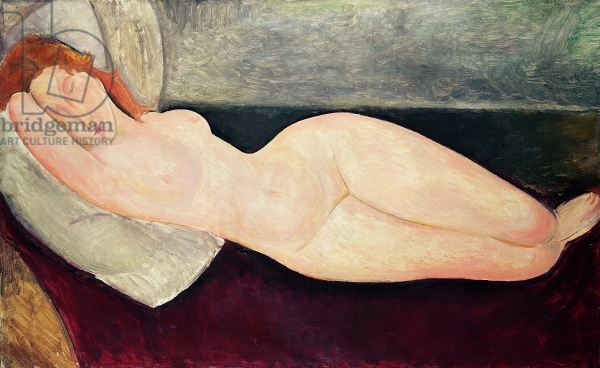
Modigliani: The man behind the mask
At the 95th anniversary of Modigliani’s death (January 24) we take a look at the man behind a controversial reputation.
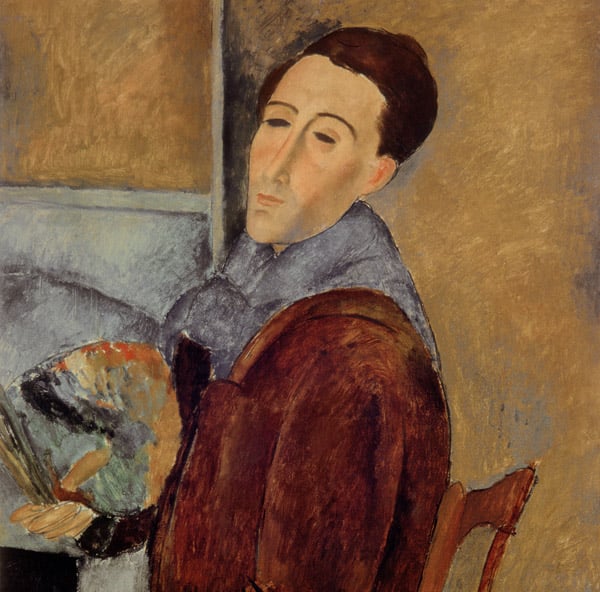 |
| Self Portrait, 1919 by Amedeo Modigliani(1884-1920) / Museu de Arte, Sao Paulo, Brazil / Bridgeman Images |
Amedeo Modigliani (1884–1920) is often referred to as one of the greatest—and most misunderstood—artists of the twentieth century. Despite his great talent, Modigliani lived a penurious life, which has become material for myths and speculations around his perplexing personality. Some critics claim that his enduring popularity was only due to his charismatic presence, but that in reality his work was mediocre. In his article Rats’ teeth and empty eyes, Adrian Searle questions “After the long necks, the oval faces, the out-of-kilter almond-shaped eyes and the pinched, pursed lips of his subjects, what is there to be said about Modigliani’s work?”
I would say, plenty.
Personally, there is something about the expressions on Modigliani’s subjects that I find mesmerizing. His portraits inspire tenderness and melancholy. Perhaps it is the tilted heads and the submissive gaze, or the unseeing eyes with no pupils. The eyes are blank, like the ones from a mask, yet they are able to transmit so much. As if we didn’t need to look into the model’s eyes to get into their thoughts.
 |
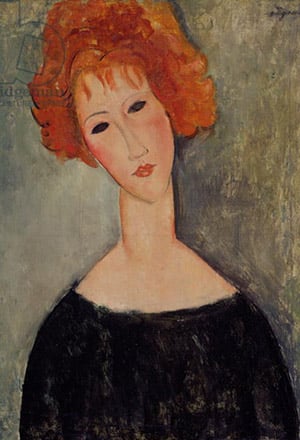 |
|
| Portrait of Jeanne Hebuterne in a large hat, c.1918-19 | Red Head by Amedeo Modigliani (1884-1920) |
Modigliani’s story is no different from other artists who struggled because they were not appreciated in their own time. His lifestyle and self-destructing habits stood out, even among bohemian artists. The image of the ill-fated artist, the “poor Modì”[1], became overrated. However, there is something hiding behind this “cursed artist” mask. I recently read that perhaps Modigliani’s reputation was a self-fabricated façade. Biographer Meryle Secrest’s speculates that Modigliani was happy to let people consider him an alcoholic and drug addict, “and thus to mistake the symptoms of his tuberculosis, which he kept a secret. Drunks were tolerated; carriers of infectious diseases were not.”[2] An interesting theory, yet perhaps just a theory. Modigliani’s life has constantly been romanticized. Biographers and screenwriters have attributed him phrases and actions that might or might not have happened. Were “Cara Italia!” (Beloved Italy) really his last words? Did he really ask his wife, Jeanne Hébuterne, to follow him to the grave “so that I can have my favourite model in Paradise and with her enjoy eternal happiness”?
 |
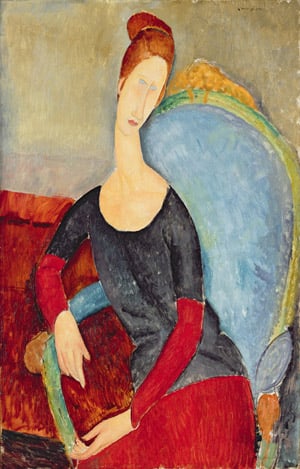 |
|
| Portrait of Jeanne Hebuterne, 1918 |
Mme Hebuterne in a Blue Chair, 1918 |
His particular style to depict eyes has also been subject for speculation. From the Hollywoodesque interpretation that Modigliani would not paint the lover’s eyes because they were too beautiful and too intimate (“I will paint your eyes when I find your soul”) to the – more realistic – explanation that he was profoundly influenced by African sculpture thus the elongated and simplified features.
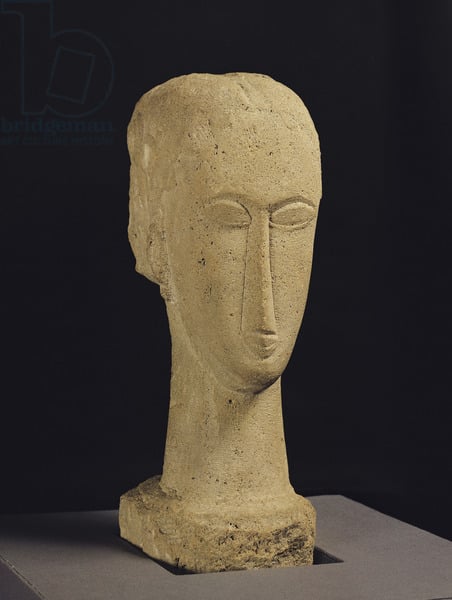 |
| Head, c.1911-12 (stone), Modigliani, Amedeo (1884-1920) / Perls Gallery, New York, USA / Bridgeman Images |
The brilliance of Modigliani’s work resides not only in the eyes of his subjects. The colours and the backgrounds are also intriguing. He used broad blocks of color; the dark and muted, subdued colours give the portraits a melancholic and evocative air but color was never the guiding essence of his art. The plain interiors offer no distractions and allow us to gaze at the model’s beauty and her serene expressions. Elongated, angular lines and the sculptural tranquility on the sitter’s face are typical of the artist’s work.
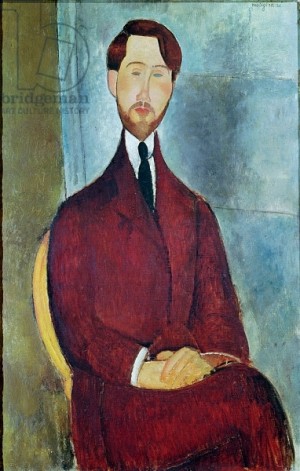 |
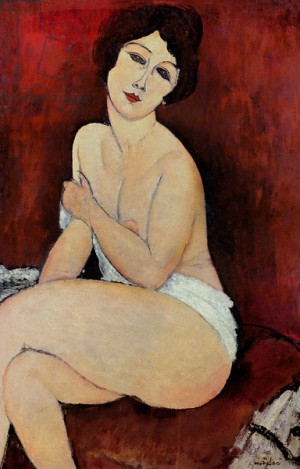 |
|
| Leopold Zborowski, 1917 |
|
As for Modigliani, the man, there is really little we can gather from his short life. Not even his daughter Jeanne was able to detangle Modigliani’s life in her book Modigliani: Man and Myth. Many aspects from his life will remain as part of a legend, but one thing is real: his work. The beauty of his subjects and the sentiments that they are able to transmit will remain and transcend, despite of the artist’s reputation.
[1] The nickname Modì comes from the Italian adaptation of the French word “maudit” which translates as “cursed”. Because of the way it is pronounced, it sounds exactly like the first 4 letters of the artist’s last name.
[2] Peter Schjeldahl, Book review of Meryle Secrest’s “Modigliani: A Life”, The New Yorker, March 7, 2011
Art images for licensing
More Modigliani images can be found in the Bridgeman image archive. Contact uksales@bridgemanimages.com for image licensing and copyright enquiries.
